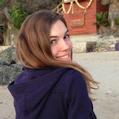spaceDisplaced: Investigating Presence Through Mediated Participatory Environments
Abstract
References
Index Terms
- spaceDisplaced: Investigating Presence Through Mediated Participatory Environments
Recommendations
Virtual Dance Mirror: A Functional Approach to Avatar Representation through Movement in Immersive VR
MOCO '22: Proceedings of the 8th International Conference on Movement and ComputingImmersive Virtual Reality (VR) technologies offer new possibilities for studying embodied interaction with different sets of constraints and affordances for action-taking while using one’s physical body. In this study, we designed and prototyped a VR ...
Being-in-the-Gallery
CHI EA '19: Extended Abstracts of the 2019 CHI Conference on Human Factors in Computing SystemsBeing-in-the-Gallery is an immersive experience which explores the embodied nature of virtual reality and the implications this has on contemporary sculptural practice and our encounters with both. This interactive artwork is experienced through the HTC ...
Effects of first vs. third-person perspective and self- versus other-avatars on user movements in virtual reality
Highlights- We find evidence of the self-follower effect in avatars not controlled by the user.
- Participants' movements correlated positively with those of an avatar seen from the 1PP.
- Participants' movements correlated negatively with those ...
AbstractSocial science experiments in virtual reality (VR) frequently manipulate the perspective from which a user views an avatar and the identity of an avatar to change participant perceptions and attitudes. However, avatar embodiment may also ...
Comments
Information & Contributors
Information
Published In

In-Cooperation
- University of Macedonia
- Aristotle University of Thessaloniki
- Université Paris 8: Université Paris 8
Publisher
Association for Computing Machinery
New York, NY, United States
Publication History
Check for updates
Author Tags
Qualifiers
- Research-article
- Research
- Refereed limited
Conference
Acceptance Rates
Contributors
Other Metrics
Bibliometrics & Citations
Bibliometrics
Article Metrics
- 0Total Citations
- 133Total Downloads
- Downloads (Last 12 months)8
- Downloads (Last 6 weeks)2
Other Metrics
Citations
Cited By
View allView Options
Get Access
Login options
Check if you have access through your login credentials or your institution to get full access on this article.
Sign in

